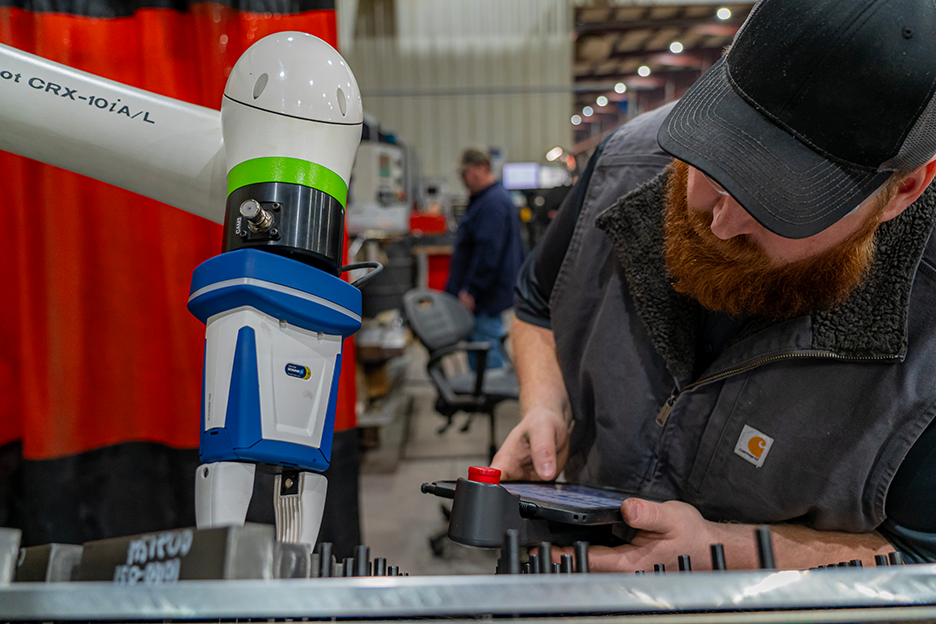
Ignore the stories about robots taking jobs — manufacturers are using robots to do the jobs they can’t find people for. Labor shortages are a growing problem for many businesses, which is one reason they are investing in automation in general, and robots in particular.
Robots increase capacity, improve quality, make the workplace safer and help combat rising costs. There’s a view in some sectors, though, that robots are just for high-volume manufacturers with deep pockets. While a healthy capital expenditure budget is never bad, cobots are upending that paradigm. This blog will explore collaborative robots versus traditional robots so you understand what a cobot could do for your business.
The Difference Between Industrial Robots and Collaborative Robots
Robots and cobots are both arm-like devices with multiple servo-motor controlled joints. A program moves the end effector (the gripper or tool at the end of the arm) through space to do a job.
With a traditional robot, those motors could injure anyone if struck. That’s why proper guarding is essential. Cobots work differently. Often, they have limited power and force, with low inertia motors. Many are implemented with human-sensing devices and/or collision detection sensors. You’ll also notice rounded, sometimes padded, corners and close attention to eliminating pinch points.
We should take a moment to differentiate between collaborative robots and service robots. Service robots are mobile machines that move to where they’re needed. You might see them in hotels, hospitals and even restaurants. In industry though, some manufacturers and laboratories are using autonomous or mobile cobots to move between machines or workstations. These differ from service bots in being engineered for industrial tasks in the workplace, rather than for clean, quiet and comfortable surroundings.
Having clarified the cobots versis robots difference, let’s now turn to the differences in usage. Good applications for cobots include:
- Welding and soldering: Fit up by hand, then let the cobot move the arc to achieve highly repeatable welds.
- Deburring and polishing: Force control makes cobots ideal for these tasks as they produce consistent results, even when there’s variation in edge and surface position.
- Assembly: Used for insertion tasks, the cobot backs off and tries again when forces get too high.
- Dispensing and gluing: Working alone or with an operator, a cobot can lay down beads on a path or apply the right amount of adhesive to a surface.
- Machine tending: A good mobile cobot application is to move a batch of parts through turning, drilling or other operations, unloading and loading until the batch is ready to move on
- Bin picking: Connect a vision system and have the cobot retrieve randomly oriented parts and place them in trays or on a belt for the next operation.
- Inspection and test: The cobot moves a camera over the workpiece, taking pictures and checking for features and reading codes. It can also initiate test sequences and equipment.
Ready-to-Roll Cobot Systems
Acieta has a long history of helping manufacturers implement robotic automation. We’ve developed and installed both traditional FANUC robots and cobots for welding, part handling and many more applications.
To get cobots running in less time, we’ve developed a line of cobot systems, including the FASTLOAD® CX1000 and CX2000 machine tending systems and the FASTARC® CX1000 and CW cobot welding systems. These or other robotic automation systems could help you boost productivity and quality while addressing labor shortages. Contact us to learn more.